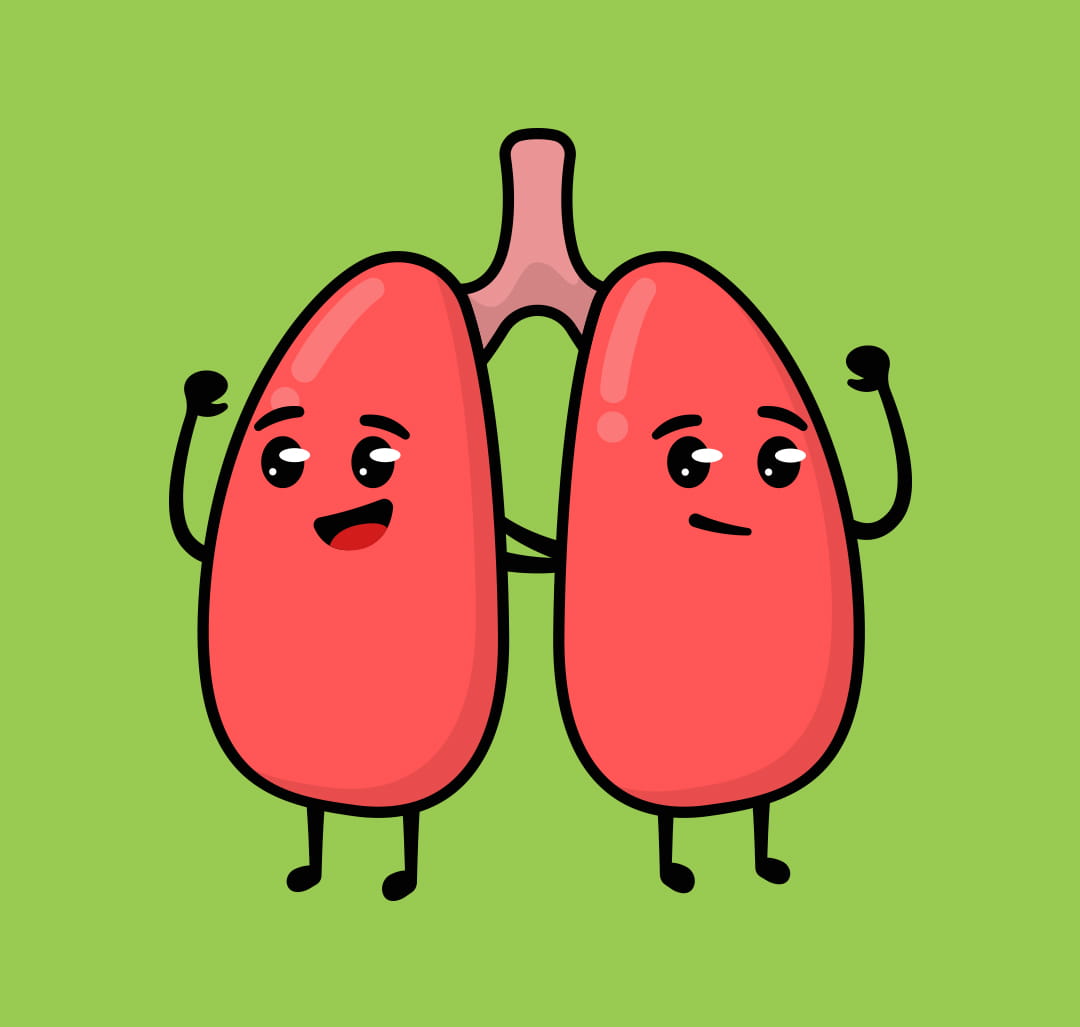Healthy lungs
Healthy lungs have a pink color. This shows they are free from harmful substances.
They have a normal size and shape. The right lung is bigger and has three sections called lobes, while the left lung is smaller and has two lobes.
Lungs of a healthy person work properly. Millions of tiny air sacs called alveoli fill with oxygen and deliver it to the bloodstream.
Healthy lungs do not have any kind of inflammation. This means there is no swelling or damage.
The air sacs in the lungs are also intact and help in the exchange of oxygen and carbon dioxide.
The diaphragm, a muscle that helps with breathing, is dome-shaped and helps in smooth breathing.
Healthy lungs are free from tumors.

Smoker’s lungs
The color of lungs in people who smoke turns black. This color comes from tar and other chemicals in cigarette smoke.
A smoker’s lung can be larger or smaller than normal. The shape can be uneven due to damage and swelling.
Some parts of lungs do not work. Damage from smoking can prevent air sacs from filling with oxygen.
People who smoke have patches of inflammation in their lungs. This inflammation damages lung tissue and makes it hard for them to breathe.
Air sacs of unhealthy lungs can lose elasticity and nor function properly. This condition is called emphysema, which makes breathing very difficult.
The diaphragm can also become weak or damaged, making it difficult to breathe.

Why quitting helps
Quitting smoking is one of the best things you can do for your lung health. While it won't completely reverse lung damage, it can significantly help your lungs start to heal and function better. Here's how stopping smoking benefits your lungs;
Quitting smoking helps your lungs start to heal Your breathing will get better. You will cough less and have less shortness of breath After just 20 minutes of quitting smoking, your heart rate will drop Within 12 hours, the carbon monoxide level in your blood will drop to normal Within 2–12 weeks, your circulation will start to improve and you will see an improvement in your lung function Within 1–9 months, coughing and shortness of breath will significantly decrease. You will breathe better, cough less, and experience milder symptoms if you catch a cold or flu
After five years, your risk of pneumonia and lung cancer will go down Your stroke risk will reduce to that of a non-smoker within 5–15 years After a decade of quitting smoking, your chances of dying from lung cancer will be about half that of a smoker Within 15 years, your risk of heart disease matches that of a non-smoker Quitting smoking is a big step for better lung health.
Reference
- Living with Lung Disease and the Benefits of Quitting Smoking. [Internet]. American Lung Association. 2023. Available from: Click here
- What are the differences between a smoker's lungs and healthy lungs?. [Internet]. Medicalnewstoday. Available from: Click here